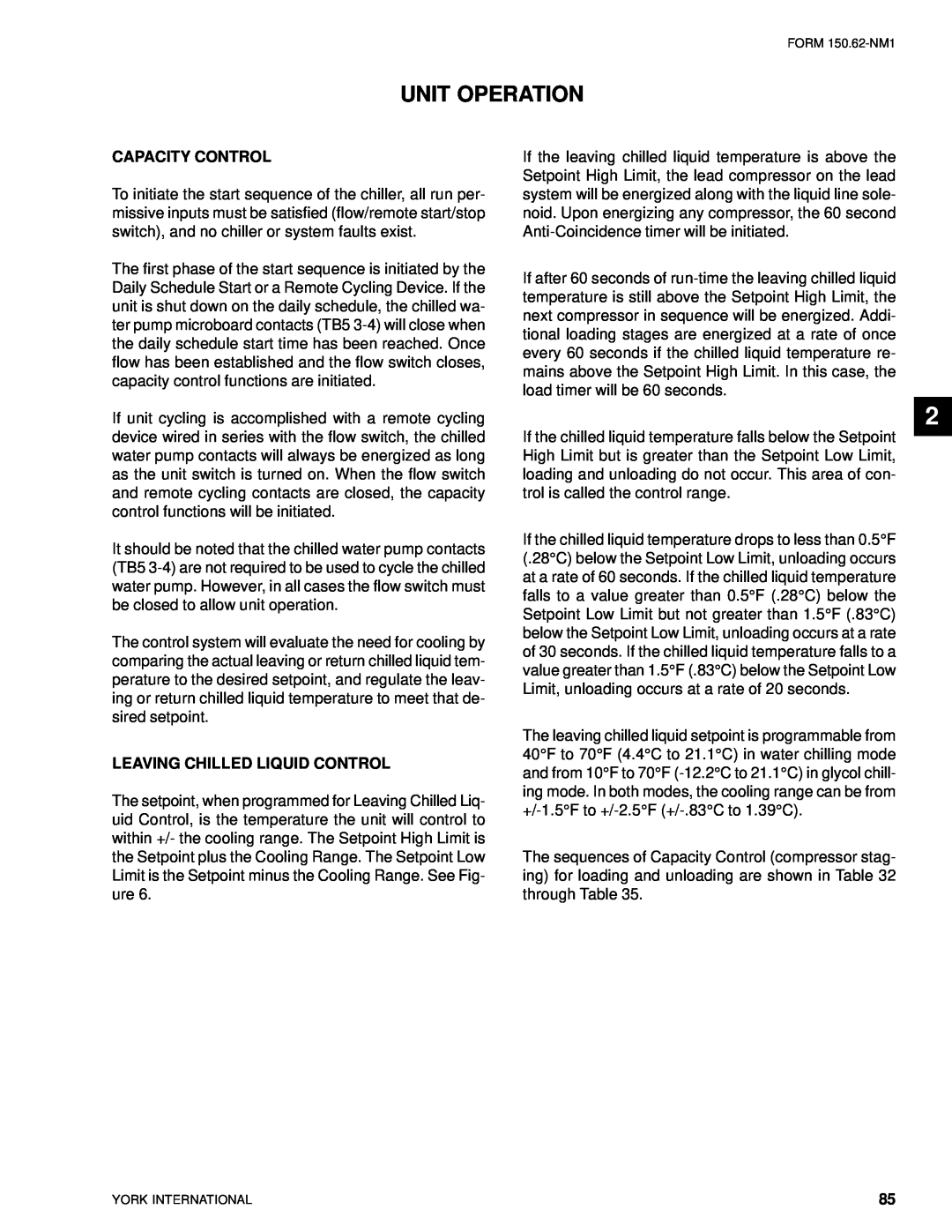FORM
UNIT OPERATION
CAPACITY CONTROL
To initiate the start sequence of the chiller, all run per- missive inputs must be satisfied (flow/remote start/stop switch), and no chiller or system faults exist.
The first phase of the start sequence is initiated by the Daily Schedule Start or a Remote Cycling Device. If the unit is shut down on the daily schedule, the chilled wa- ter pump microboard contacts (TB5
If unit cycling is accomplished with a remote cycling device wired in series with the flow switch, the chilled water pump contacts will always be energized as long as the unit switch is turned on. When the flow switch and remote cycling contacts are closed, the capacity control functions will be initiated.
It should be noted that the chilled water pump contacts (TB5
The control system will evaluate the need for cooling by comparing the actual leaving or return chilled liquid tem- perature to the desired setpoint, and regulate the leav- ing or return chilled liquid temperature to meet that de- sired setpoint.
LEAVING CHILLED LIQUID CONTROL
The setpoint, when programmed for Leaving Chilled Liq- uid Control, is the temperature the unit will control to within +/- the cooling range. The Setpoint High Limit is the Setpoint plus the Cooling Range. The Setpoint Low Limit is the Setpoint minus the Cooling Range. See Fig- ure 6.
If the leaving chilled liquid temperature is above the Setpoint High Limit, the lead compressor on the lead system will be energized along with the liquid line sole- noid. Upon energizing any compressor, the 60 second
If after 60 seconds of
If the chilled liquid temperature falls below the Setpoint High Limit but is greater than the Setpoint Low Limit, loading and unloading do not occur. This area of con- trol is called the control range.
If the chilled liquid temperature drops to less than 0.5°F (.28°C) below the Setpoint Low Limit, unloading occurs at a rate of 60 seconds. If the chilled liquid temperature falls to a value greater than 0.5°F (.28°C) below the Setpoint Low Limit but not greater than 1.5°F (.83°C) below the Setpoint Low Limit, unloading occurs at a rate of 30 seconds. If the chilled liquid temperature falls to a value greater than 1.5°F (.83°C) below the Setpoint Low Limit, unloading occurs at a rate of 20 seconds.
The leaving chilled liquid setpoint is programmable from 40°F to 70°F (4.4°C to 21.1°C) in water chilling mode and from 10°F to 70°F
The sequences of Capacity Control (compressor stag- ing) for loading and unloading are shown in Table 32 through Table 35.
2
YORK INTERNATIONAL | 85 |
